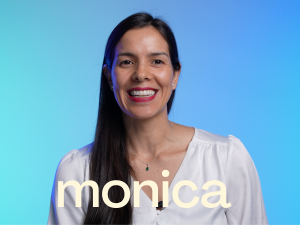‟ I think a change of mentality at different levels is crucial.”
Meet Monica Arenas. From the city of eternal spring, Medellín, to the tech research hub of Luxembourg, her journey is one of scientific reinvention. A Colombian physicist turned computer scientist, she’s swapped lab materials for algorithms. Today, she crafts digital fingerprints to verify luxury goods. Like her teenage idol Marie Curie, Monica bridges disciplines – developing cryptographic tools to fight counterfeits, one authentic product at a time.
Relive the conversation—transcript below!
Tell us about your background and journey to SnT.
I arrived in Luxembourg seven years ago and joined SnT in 2020. My background is interdisciplinary: I have a bachelor’s in applied physics, a master’s and PhD in material science, and then decided to move to the exciting field of computer science.
‟ I always knew I’d be in STEM, but discovering computer science has been wonderful. I love designing algorithms and programming. ”
What is your research about?
My research focuses on developing secure authentication protocols to tackle fake products. We attach materials with unique properties to items like luxury goods, creating what behaves like an artificial fingerprint. Then we build protocols that link the physical product with a digital identity. So, when you buy jeans or shoes, instead of using QR codes, we use special materials to ensure authenticity through your smartphone.
How does your research help society and what problem does it solve?
My research topic helps to reduce fake products out in the market. What I do is ensure that items are original – the ultimate goal is to reduce counterfeits and protect consumers.
Who was your role model growing up?
When I was a teenager, my role model was Marie Curie because she was the first person to win two Nobel Prizes in two different scientific fields, and this is really impressive.
What does your workspace look like?
My workspace looks very simple and clean. I just have my computer and a screen, no additional gadgets, no mouse.
‟ I love learning keyboard shortcuts in different applications and software – it makes my life faster and more efficient. ”
What assumptions do people make about your work?
When I say I work in applied cryptography, many people think it’s related to cryptocurrencies, but one thing doesn’t necessarily imply the other. Also, people assume researchers look like crazy people, but we’re just normal people doing fascinating work.
How has diversity impacted your career?
When I started my career, diversity topics were almost absent in Colombia and Brazil. Once I joined SnT, I became involved in different equality working groups. While awareness is important, I think a change of mentality at different levels is crucial. It didn’t impact my career negatively because I was determined to pursue STEM, but I acknowledge there’s still a gender gap in academia.
What made you feel welcome at SnT?
What made me feel welcome was my boss. He tried to organise an outing with the group as part of my welcome, which I really appreciated, even though in the end it turned into a stay-at-home plan because I joined during the COVID lockdown!
What does tech research need more of?
Tech research definitely needs more diversity.
Supported by the Luxembourg National Research Fund.
